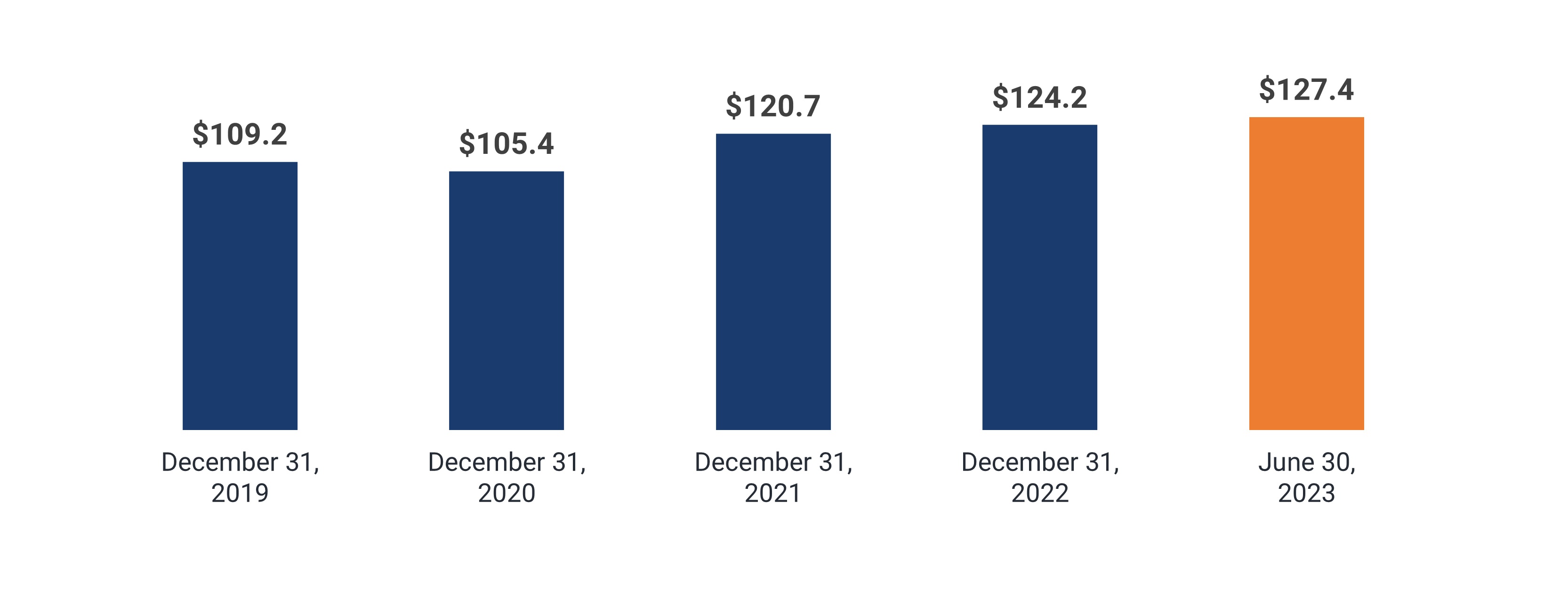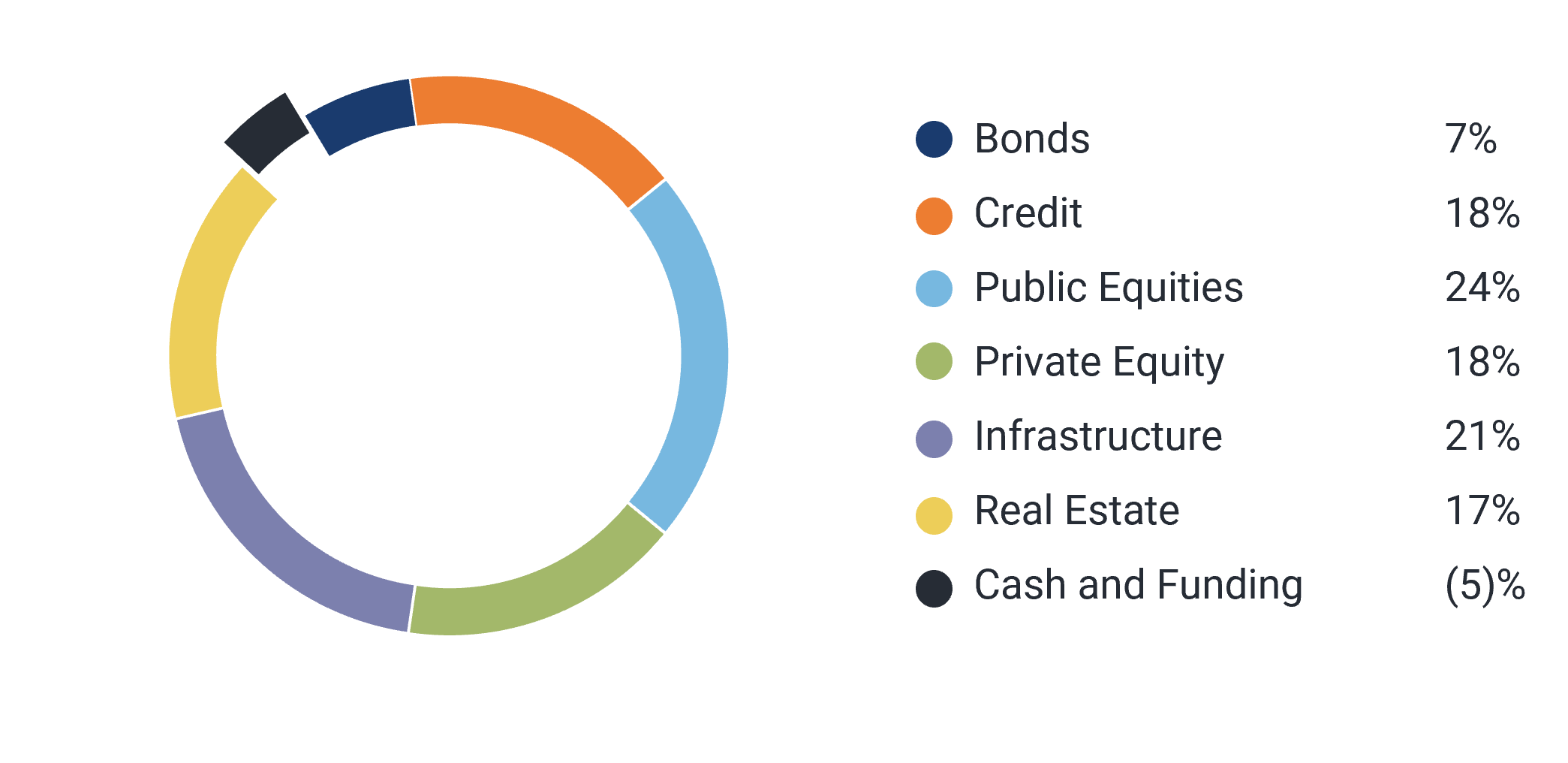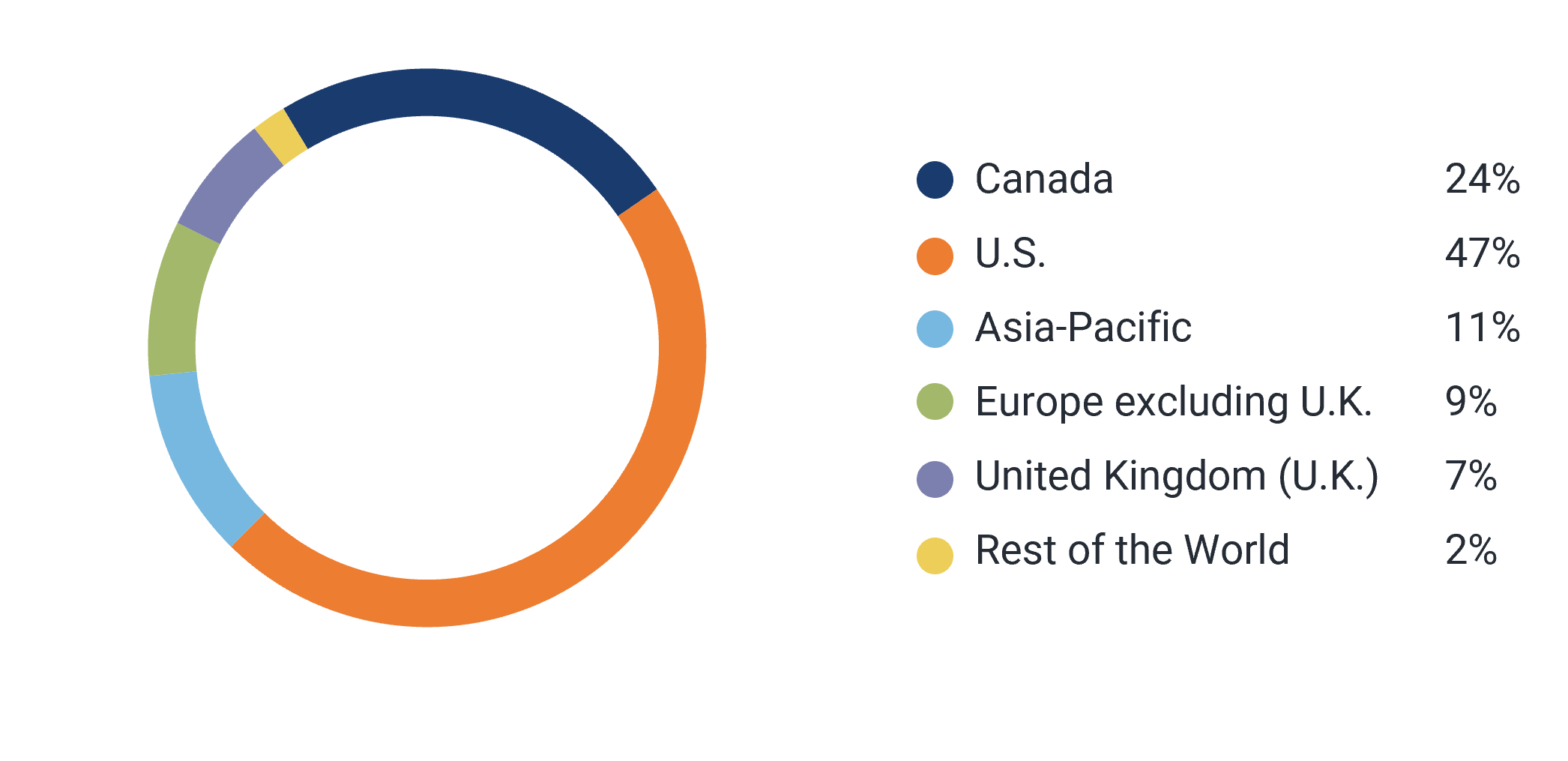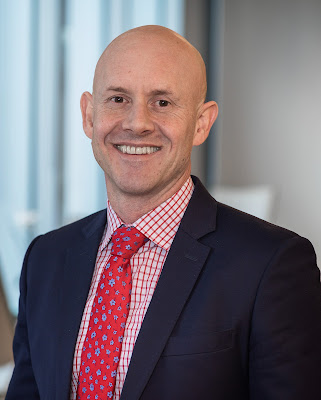A Conversation With OMERS' CFO & CSO On their Mid-Year Results
The Ontario Municipal Employees Retirement System, which manages a pension investment fund for 1,000 employers, is not fazed by the uncertain economic backdrop and remains optimistic about delivering solid returns, its chief executive officer and chief financial officer said in an interview Wednesday.
Buoyed by a 3.1-per-cent net investment return in the first half of the year, the two OMERS leaders said they are not overly concerned about mixed economic signals that include a souring Chinese economy, disinflation in the United States and Canada, and a chaotic commercial real estate market. Instead, they expressed confidence in the fund’s prospects for finding pockets that can deliver good returns.
The threat of economic pain “is so nation, and even market, specific,” CEO Blake Hutcheson said, adding that investment returns can still be found even when the broader economy is hobbled. “Markets are very different from the economy.”
OMERS is particularly optimistic about private credit, which resembles traditional bank lending and makes up 18 per cent of its total portfolio. In the aftermath of the U.S. regional banking crisis this spring, many lenders have had to pull back on credit because the deposits they relied on to fund such loans have been drying up, chief financial and strategy officer Jonathan Simmons added.
“It’s the best opportunity we’ve seen in 20 or 30 years in that space,” he said.
Over the six months ended June 30, the fund’s largest gain came from public equities, with an exposure to major companies in the technology, communication, financials and consumer discretionary sectors delivering a 5.9-per-cent return. Private credit was the second-best performer, delivering a 3-per-cent return.
OMERS manages $127-billion worth of assets and has delivered annual net returns of 10.5 per cent over the past three years and 7.8 per cent over the past 10 years.
Today, OMERS released its mid-year results stating it's a good start to the year:
Rising interest rates continued to support returns from bond and credit investments.
Public equities delivered strong returns from our core holdings in high-quality, large-cap stocks in the technology, communication, financials, and consumer discretionary sectors.
Private equity assets earned a positive return as operational improvements and tuck-under acquisitions increased portfolio company earnings.
Our globally diversified infrastructure assets continued to generate steady income and generated net valuation gains primarily from our fibre optic networks.
Our real estate assets recognized valuation declines as a result of pressure from higher interest rates and lower market demand for space in the office sector. These declines offset the stable income collected by our properties, profits from completed development projects and valuation gains in high-quality retail assets, residential properties and hotels which benefited from favourable leasing activities.
Foreign exchange detracted from our net investment results by approximately 1.0%, primarily due to weakening of the US dollar relative to the Canadian dollar.
OMERS
generated a net investment return of 3.1%, or a gain of $3.8 billion,
during the six-month period from January 1 to June 30, 2023. Over the 12
months ended June 30, 2023, the Plan earned a net investment return of
7.8%, or a gain of $9.2 billion. At June 30, 2023, net assets totaled
$127.4 billion, an increase of $7.9 billion over the last 12 months.
“We
have had a good start to the year, generating almost $4 billion in
returns on behalf of our members,” said Blake Hutcheson, OMERS President
and CEO. “As a pension plan that pays benefits over generations, we are
a long-term investor and over the last 10 years OMERS has earned an
average net return of 7.8%, adding more than $68 billion to the Plan.”
“These
results underscore the value of a well-diversified portfolio,” said
Jonathan Simmons, OMERS Chief Financial and Strategy Officer. “Strong
gains in our high-quality public equity holdings drove our performance.
Real estate valuations decreased in the first half of 2023, but this
impact was more than offset by solid earnings from infrastructure and
credit investments.”
Mr. Hutcheson continued, “Rising interest
rates are creating opportunities for OMERS in fixed income that we have
not seen in many years. We are selectively targeting these opportunities
while actively managing our existing portfolio and patiently waiting
for the right time to deploy our ample liquidity into growth
opportunities.
“On behalf of our Board, our Executive Leadership
Team and OMERS employees around the world, we are proud to serve more
than half a million OMERS members whose hard work and dedication keep
our communities strong.”
About OMERS
OMERS is a jointly sponsored, defined benefit pension plan, with 1,000 participating employers ranging from large cities to local agencies, and over half a million active, deferred and retired members. Our members include union and non-union employees of municipalities, school boards, local boards, transit systems, electrical utilities, emergency services and children’s aid societies across Ontario. OMERS teams work in Toronto, London, New York, Amsterdam, Luxembourg, Singapore, Sydney and other major cities across North America and Europe – serving members and employers, and originating and managing a diversified portfolio of high-quality investments in public markets, private equity, infrastructure and real estate.
Contact:
Ann DeRabbie
aderabbie@omers.com
647.924.8923
Net Assets
$ Billions

Diversified by Asset Class and Geography
OMERS invests in high-quality assets that are well-diversified by geography and asset type.
Asset Diversification
As at June 30, 2023

Geographic Diversification
As at June 30, 2023

Asset Class Investment Performance
Investment Performance Highlights
Over the six months ended June 30, 2023:
Liquidity
We continue to maintain ample liquidity, with $23.6 billion in liquid assets to pay pension benefits, fund investment opportunities, satisfy potential collateral demands related to our use of derivatives, and to fund expenses. We also have the capacity to borrow an additional $2.3 billion while remaining within our 10% leverage limit.
Long-Term Issuer Credit Ratings
This Investment Update presents certain non-GAAP measures. These measures are calculated on the same basis as those calculated and presented in our 2022 Annual Report. This Investment Update and the Condensed Interim Consolidated Financial Statements (the “Interim Financial Statements”) are unaudited. OMERS Administration Corporation’s financial performance set out in this Investment Update is only for the period ended June 30, 2023, unless otherwise indicated. Past performance may not indicate future performance because a broad range of uncertainties (including without limitation those related to interest rates and inflation) could have an impact on the performance of various asset classes. The financial information included in this Investment Update should be read in conjunction with the Interim Financial Statements.
Transaction Overview
We approved a major conversion project, to redevelop Victoria House, an iconic art deco office building in Central London, into a state-of-the-art life sciences hub that will also be the new home of the BioIndustry Association, the trade association for UK life sciences.
We continued to progress our life sciences activity in the US, including the purchase and long-term lease back of a 120,000 square foot, state-of-the-art biomanufacturing facility in Boston, the final acquisition and completion of a 95,000 square foot North Carolina biomanufacturing facility, and the sale of a newly constructed 140,000 square foot biomanufacturing facility in Boston
We made a significant capital commitment to Beanfield Technologies Inc, a 100% fiber infrastructure network servicing the enterprise, commercial, and residential sectors, primarily in Toronto, Vancouver and Montreal. This strategic investment will mark our entry into North American digital infrastructure and aims to support Beanfield’s mission of providing cost-effective, high-speed broadband connectivity to a wider range of homes and businesses.
We signed an agreement for the acquisition of Kenter, a Dutch energy infrastructure solutions business that provides medium-voltage infrastructure – including transformers and switchgear – and meters to over 25,000 commercial and industrial business customers in the Netherlands and Belgium.
In conjunction with an existing institutional capital partner, we announced the acquisition of The Rimrock Resort Hotel, an iconic luxury resort hotel in Banff, Alberta.
We signed an agreement to invest in a portion of future royalty payments on worldwide sales of Mavyret®/Maviret®, an important cure for chronic hepatitis C virus (HCV) infection.
We completed the acquisition of Bionic, which connects small and mid-sized businesses with essential service solutions.
- We led funding rounds for innovative companies across a range of industries, including:
OneVest, a wealth-as-a-service platform that enables banks, wealth managers, asset managers, and other financial institutions to deploy digital capabilities;
Mosaic, a real-time planning and analytics platform that enables finance professionals to deliver business insights;
Carrum Health, who will use the funding to expand its growing oncology benefit offerings and scale its surgical care service lines, while helping employers control healthcare spending; and
Cerbos, a software company that makes authorization simpler to implement and manage to free up product teams so they can focus on building their core products and driving business value.
We also participated in a funding round for Aledade, providing additional support that will further accelerate the growth of their primary care network in the US.
We completed the sale of our majority stake in Trescal, a global leader in calibration services, and look forward to continued partnership with the business through our re-investment as minority owners.
Investing for tomorrow
We remain
disciplined and focused on ensuring that our portfolio is comprised of
high-quality, diverse assets that meet our risk and return requirements.
Below are some of our 2023 investment activities.
You've seen the print, 3.1% for the first half of the year, 7.8% for the last 12 months. As far we are concerned, it's a good start to the year. If you think of where those returns came from, it really demonstrates the benefits of diversification. Equities did most of the work for us. Almost 6% return in equities contributed almost half the overall return. Credit and Infrastructure were also very important. And that offsets weakness that we had in asset classes like Real Estate. So that old benefit of diversification continues to ring true for OMERS as it does for other investors.
It's very similar to what it was six months but the fact that it has stayed the same in terms of allocation where the portfolio as a whole has grown slower than the return of the asset class means we've been selling marginally into a rising market.I also noted that I remember that Public Equities portfolio has a value/ quality tilt:
We're happy with the return we got. There were some pretty juicy returns to be had in the S&P500 in the first six months of the year but that was very concentrated in the Magnificent Seven (Apple, Microsoft, Nvidia, Amazon, Google, Meta and Tesla). We have exposure to those stocks of course but given the quality tilt of the portfolio, not appropriate to be overweight there. We are more diversified that the S&P500 and that was good to us in the first six month of the year.
Yes, we have a return seeking portfolio for a number of years but bonds are hard to ignore right now. The fact that you can see the type of returns to be had, they are attractive to us. We haven't moved the portfolio massively yet to Bonds but that doesn't mean that's not something we are thinking about quite carefully right now.
Correct and we hold the pen on private debt, that's very important to us. One of the things that we are doing -- and you don't quite see this in the asset mix we publish -- is the balance between public and private is changing, we have been taking more private credit into the portfolio where we can be really surgical in things we underwrite. When you stack spreads on top of rates, those private credit opportunities are very attractive to us. So it's less of a spread play in public credit and we are slowly expanding private credit.
EBITDA growth is slow right now. I would say top line is very healthy but costs are up, specifically in the US. Many of our private equity investments are in US markets and there is certainly wage growth going on there. Cost pressures are keeping EBITDA growth flat.As it relates to multiples, hard to say, the market is very slow right now, there's not a lot of trades going on right now. I think we are still going to have to wait and see as to whether the reset happens and how significant it is. But it's not quite crystalizing yet.
Valuation is the CFO's responsibility. Valuations sit in my shop, not in the asset classes. And Daniel is great, we are so pleased to have him in our team.I think cap rates is where it's at in that sector. Cap rates are changing. Underlying performance of operations is actually quite healthy but interest costs are up and cap rates are up and that's really what is holding back the performance in that segment of our business.
I think you're right It's quite interesting, hotels and retail are quite strong at the moment. Office has its challenges and there quality really matters. The premium office product is very secure and anyone that has a strategy investing in Bs and Cs are probably hurting a lot right now.And Industrial assets, they're not quite as hot as they were six months ago, but again diversification at the sub asset class level is very important.
I'm having dinner with him tonight so ask me tomorrow. -:)Overall, we are quite happy with our strategy.Dan is providing tremendous institutional leadership to our team. We have a team of very talented young executives and we were very keen to have him take on an executive chair role.So I don't know if we'll see any hard lefts or rights compared to what we've been doing has worked out quite well for us.



Comments
Post a Comment